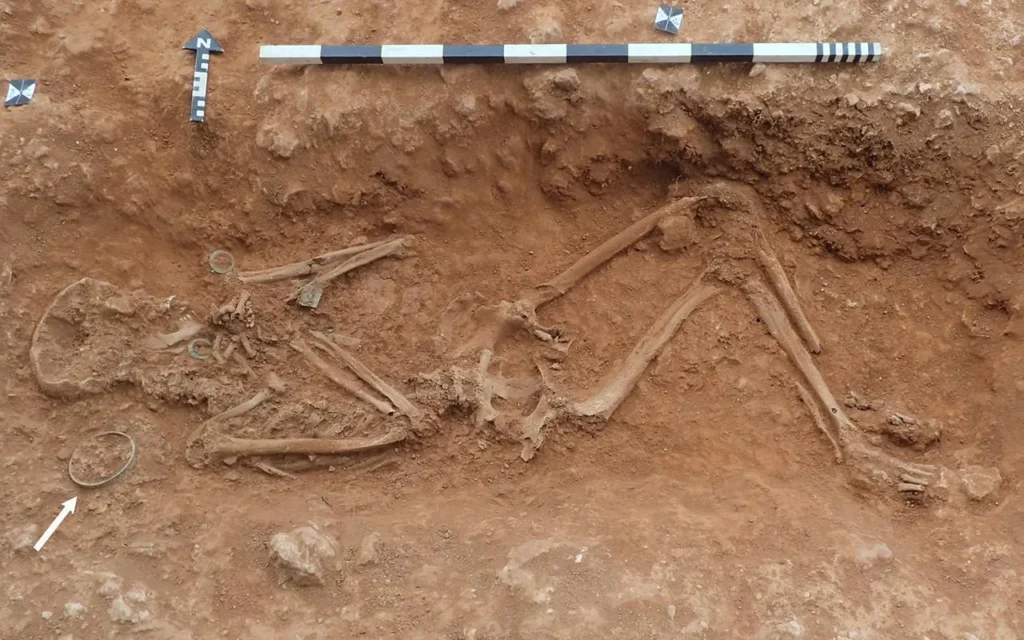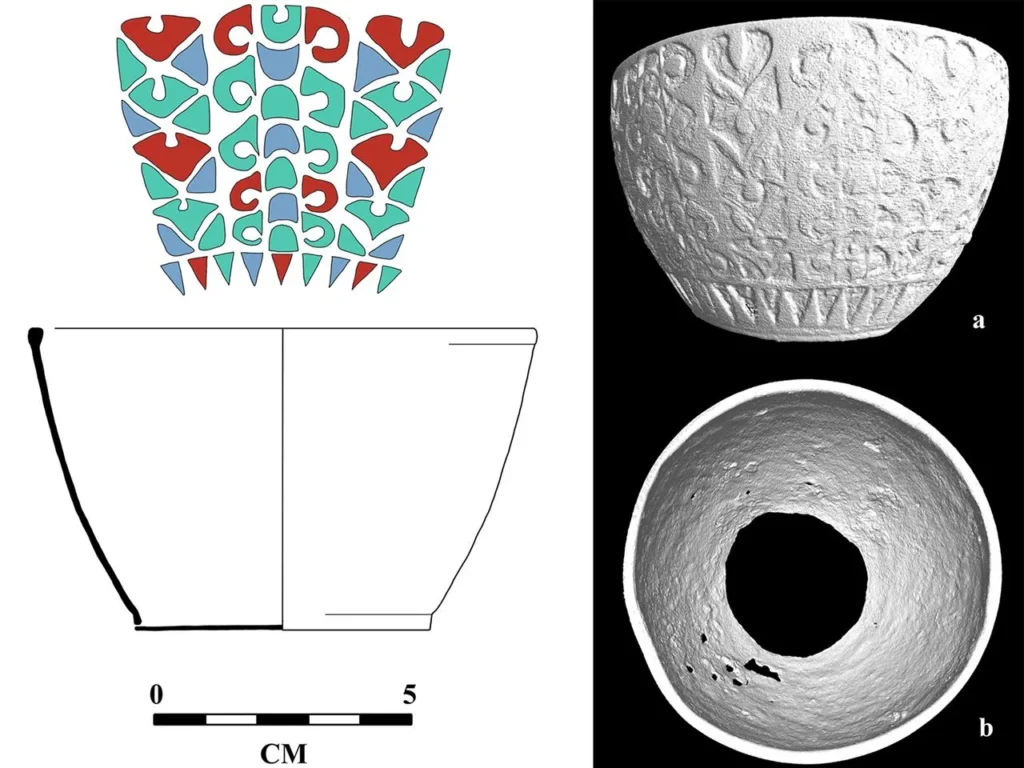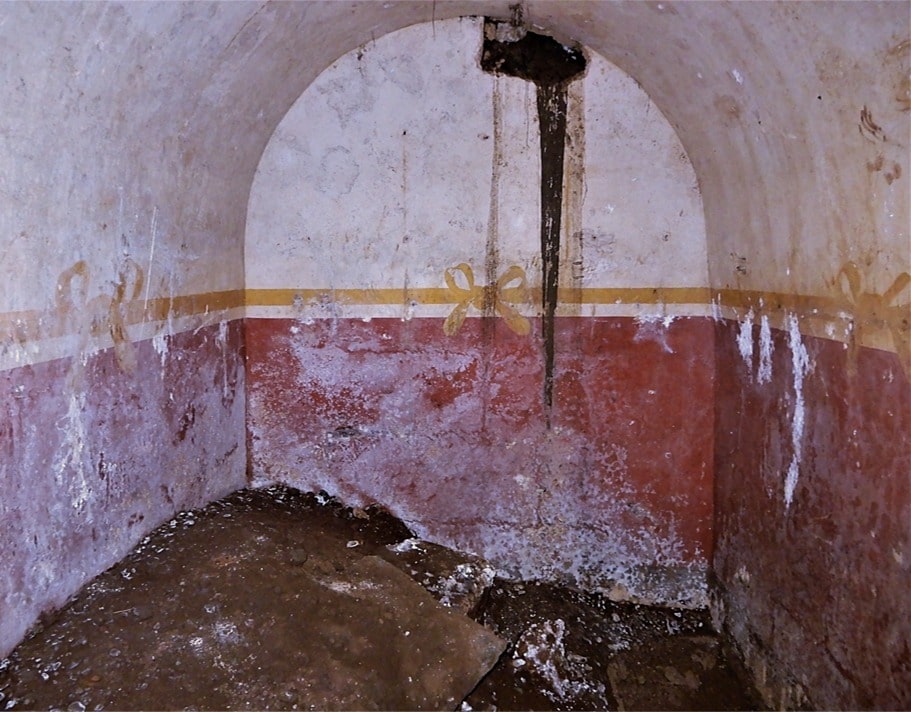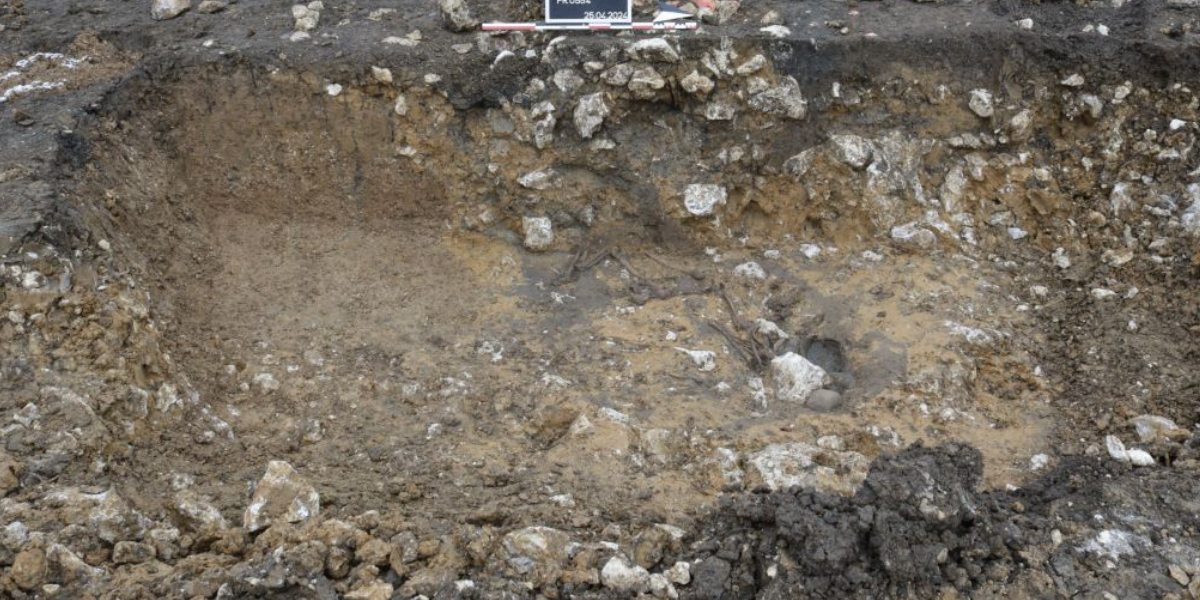In 2018, archaeologists conducting excavations in Scremby, Lincolnshire, uncovered an enameled copper alloy chalice within a 6th-century AD female grave. This discovery was part of a study by the University of Sheffield, focusing on a Migration Period cemetery in Scremby that features 49 burials dating from 480 to 540 AD.
The multicolored goblet, approximately 1,800 years old, was found in the grave of a young girl, designated Sk18. Alongside the chalice, only two circular brooches and a pair of bracelets were discovered. The chalice’s intact condition and its placement next to her head suggest it held significant importance.
Known as the ‘Scremby Chalice,’ this rare artifact is notable for its age, Roman origins, and its context within an Anglo-Saxon burial. Standing at 2.2 inches (5.7 centimeters) tall, it has the capacity to hold about 1.2 cups (280 milliliters) of liquid. The vessel features inset designs of half moons and heart shapes, which were cast into the copper alloy and filled with red, aquamarine, and deep bluish-purple enamel. Researchers believe it was made using the lost-wax casting method, highlighting the craftsmanship of Roman artisans. The style and materials of the chalice suggest it may have been imported to England from France during the mid-3rd century AD, a time when Britain was still under Roman influence.

The chalice, found intact and fully functional beside the head of the deceased, distinguishes itself from other Roman artifacts that are often discovered as scrap or fragments in Anglo-Saxon contexts. This condition suggests that it may have played a ceremonial or ritualistic role in the burial.
One of the most fascinating discoveries was the residue analysis conducted on the interior of the chalice. Researchers identified unheated, raw traces of pig fat in the lipid residues, indicating that the chalice was likely used for non-culinary purposes. This fat may have served a medicinal or ceremonial function, aligning with references in sixth-century Byzantine texts that describe the use of pig fat for treating infections.
The presence of the chalice in the grave of Sk18 underscores its potential significance as a status or spiritual symbol. In Anglo-Saxon contexts, Roman materials were often associated with mysticism, and the chalice may have represented strength or a connection to the Roman heritage.

Researchers are exploring two main theories regarding how the chalice came to be in this context. The first theory posits that it may have been retrieved from an earlier Roman burial, a notion supported by various other archaeological findings. The second, albeit less widely accepted, suggests that the chalice could have been carefully preserved as a relic or family heirloom over generations.
The findings of this research were published in the November edition of the European Journal of Archaeology.
Willmott H, Thompson L, Lundy J, Crichton-Turley C-E., “From Roman Table to Anglo-Saxon Grave: An Archaeological Biography of the Scremby Cup.” European Journal of Archaeology. 2024;27(4):507-525. doi.org/10.1017/eaa.2024.12
Cover Image Credit: H: Willmott et al., European Journal of Archaeology




